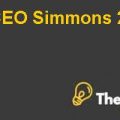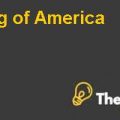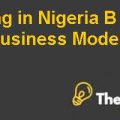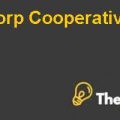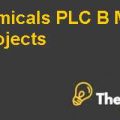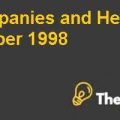
1.) Uncertainty Avoidance Index (UAI)
The UAI focuses on the degree of ambiguity and tolerance for uncertainty within an organization. People with high UAI tend to cope up with difficult situations more successfully. People that are emotional facing difficulty to deal with a high degree of uncertainty. Regarding the case, the employees and management of Ranbaxy seem to have a low degree of UAI and have difficulty to accept the change and uncertain situations.
2.) Long Term Orientation Versace Short Term Normative Orientation (LTO)
This dimension focuses on how organizations accept change, the change related to new technology and new environments. The short term normative orientation focuses on maintaining the past traditions and working on old norms. While the long term orientation focuses on the latest ways of doing things and accepting change. In this case Ranbaxy seems to be on a lower side of short term normative orientation. It does not likes change while Daiichi Sankyo wants to introduce changes to integrate both the organizations so that synergies could be created.
3.) Indulgence Versace Restraint (IND)
Indulgence focuses on the tendency to which societies and its people can work solely for their own desires and gratification. However, restraint societies focus on employees who need to control their desires and impulses and just have to think in the interest of the society. Daiichi Sankyo focuses on an indulgent organization while Ranbaxy on restraint in its societies. They do not want to change and work based on their old norms and practices. This seems to be a major cause of clash for the culture of both the companies.
QUESTION 2:
Compare two business models in the pharmaceutical industry?
ANSWER:
The comparison of both the business models is done below:
| Innovator | Generic | |
|
Risk taking |
The risk taking level under this model is very high as large expenditures are incurred on R&D costs to discover new drugs, to test them and finally launch them.
|
The risk taking level is low in this model. Generic companies are low-cost producers. They focus on efficiency in manufacturing processes to build their market share. |
|
Creativity and Innovation |
The level of creativity and innovation is much higher under this model as new research is being conducted. It is the reason that most of the drugs of these companies are patent protected. |
Creativity and innovation level is low here. The prime focus of these companies is to sell the basic drugs at the lowest cost possible. Once the patents of innovative companies expire, they can manufacture the same drugs, but only with the same ingredients, dosage and quality.
|
|
Competition |
The level of competition between innovator companies is higher. Strong brand names in the market threaten the revenue of other companies. Each innovator company focuses on its strong brand names to maintain its market share.
|
The competition faced by these companies is slightly lower. However, they also face competition with other generic drug companies. These companies overcome such competition through their low costs, low margins, efficiency in processes and supply chain integration.
|
|
Business Success |
Innovator companies are way far more successful in the global market because of their strong brand names. They have years of knowledge gathered through research and they move with the pace of the technology which make them a successful business.
|
As far as the generic companies are concerned, they are also successful in their respective industry. The focus on niche markets and are low cost producers which prove to be their competitive advantage. |
QUESTION 3:
Describe pharmaceutical industry drivers for Innovator companies and for Generic companies. Can a company sustain itself operating only one model? What is required to operate in a hybrid model?
ANSWER:
The drivers for pharmaceutical companies in the Innovator and Generic companies are listed in the table below:
|
Innovative Companies |
Generic Companies |
| - Pressure on companies to reduce their prices and profit margins.
-The latest technological advancements in manufacturing processes. -The factor of global competition also drives companies to become innovator companies. -Organizational culture is also one of the drivers for innovation in pharmaceuticals industry, where history needs to be created.
|
-The low cost drives companies to move in this industry.
-Budget constraints impose limits on the amount of R&D to be done. Lack of research forces in pharmaceutical industry forces companies to produce generic products. -Capturing the maximum market share and target through niche marketing drives companies to produce low cost products. -Companies producing generic products could still meet the requirements prescribed by the Food and Drug Administration and work on their low costs to increase their revenues.
|
OPERATING ON ONE MODEL
Companies operating only under one model can sustain themselves for a set time period after that they will either need to acquire other generic companies in the case of innovative companies if they are being threatened by their low cost or the generic companies might need to expand their operations to compete with the strongest brand names of the innovative companies. Sooner or later companies need to adopt the hybrid business model...............................
This is just a sample partial case solution. Please place the order on the website to order your own originally done case solution.


